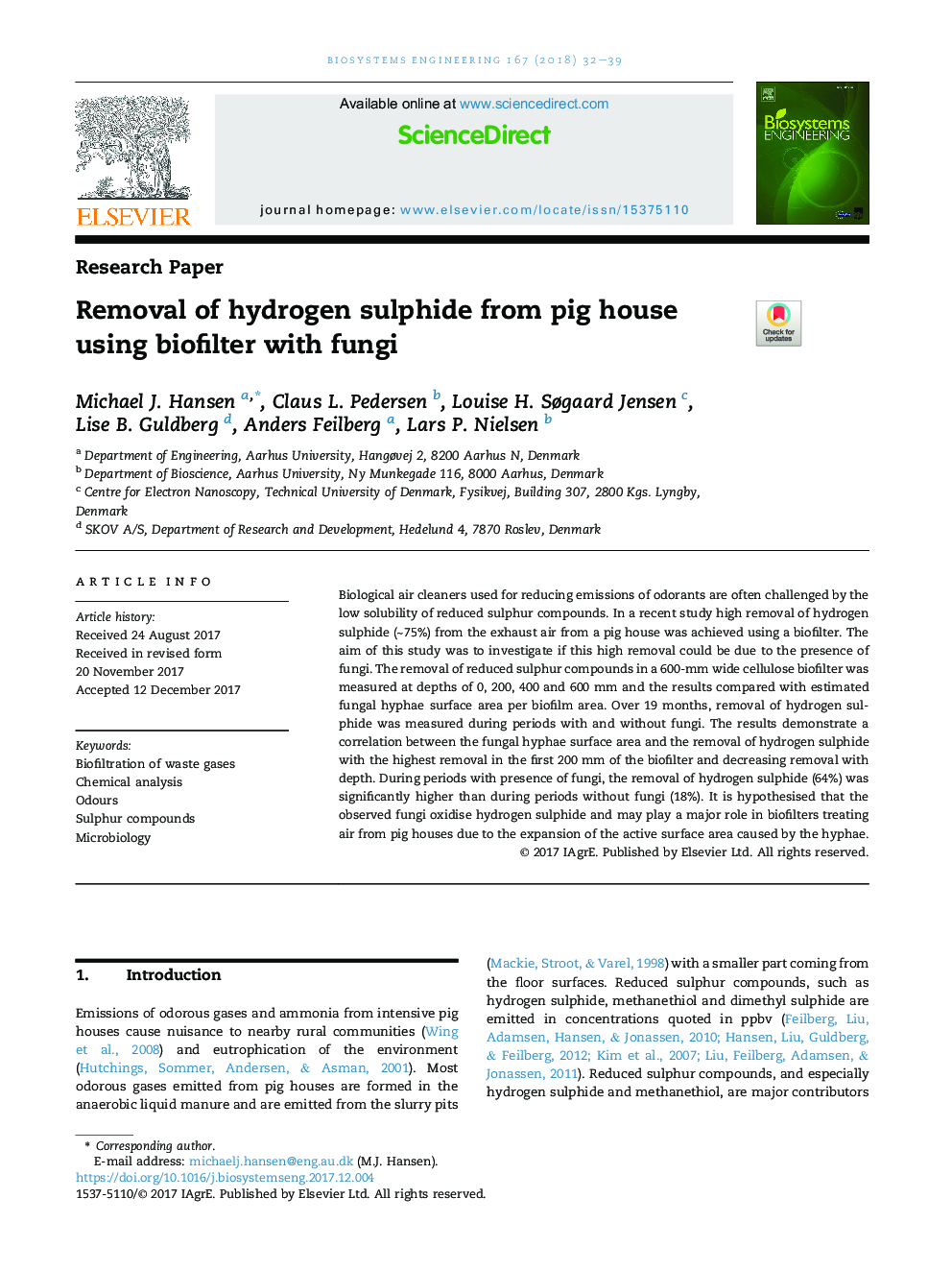| Article ID | Journal | Published Year | Pages | File Type |
|---|---|---|---|---|
| 8054791 | Biosystems Engineering | 2018 | 8 Pages |
Abstract
Biological air cleaners used for reducing emissions of odorants are often challenged by the low solubility of reduced sulphur compounds. In a recent study high removal of hydrogen sulphide (â¼75%) from the exhaust air from a pig house was achieved using a biofilter. The aim of this study was to investigate if this high removal could be due to the presence of fungi. The removal of reduced sulphur compounds in a 600-mm wide cellulose biofilter was measured at depths of 0, 200, 400 and 600Â mm and the results compared with estimated fungal hyphae surface area per biofilm area. Over 19 months, removal of hydrogen sulphide was measured during periods with and without fungi. The results demonstrate a correlation between the fungal hyphae surface area and the removal of hydrogen sulphide with the highest removal in the first 200Â mm of the biofilter and decreasing removal with depth. During periods with presence of fungi, the removal of hydrogen sulphide (64%) was significantly higher than during periods without fungi (18%). It is hypothesised that the observed fungi oxidise hydrogen sulphide and may play a major role in biofilters treating air from pig houses due to the expansion of the active surface area caused by the hyphae.
Related Topics
Physical Sciences and Engineering
Engineering
Control and Systems Engineering
Authors
Michael J. Hansen, Claus L. Pedersen, Louise H. Søgaard Jensen, Lise B. Guldberg, Anders Feilberg, Lars P. Nielsen,
